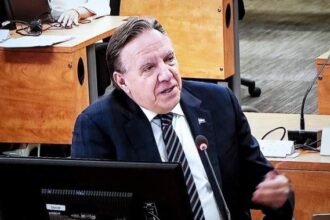In a watershed moment for Canadian politics, Prime Minister-designate Mark Carney will unveil his first cabinet lineup on Tuesday, setting the tone for what insiders describe as a “deliberately business-oriented government” focused on economic revitalization. The highly anticipated announcement comes just two weeks after the Liberal Party’s surprising electoral victory, where Carney’s economic credentials proved decisive among voters concerned about Canada’s fiscal trajectory.
Sources close to Carney’s transition team, speaking on condition of anonymity, indicate the incoming cabinet will feature a blend of experienced parliamentarians alongside private sector recruits – a strategic departure from previous administrations. “This isn’t about political tokenism,” revealed one senior Liberal strategist. “Carney is laser-focused on assembling a team that can execute on economic growth promises from day one.”
The new economic portfolio appointments are generating particular interest in financial circles, with Bay Street veterans reportedly under consideration for key positions. Former Bank of Canada economist Martha Richardson is widely expected to secure the Finance portfolio, while tech entrepreneur Raj Patel has emerged as frontrunner for the newly created Digital Economy ministry.
“What we’re witnessing is the most radical reshaping of federal economic leadership in a generation,” explains Dr. Eleanor Hughes, political economist at the University of Toronto. “Carney’s background at the Bank of England and Bank of Canada gives him unique credibility to attract talent that might otherwise avoid political entanglements.”
The incoming administration faces immediate challenges on multiple fronts. Canada’s housing affordability crisis continues unabated, with major metropolitan areas experiencing record-high prices despite increased interest rates. Simultaneously, shifting global trade patterns threaten traditional Canadian export markets, while climate adaptation demands substantial infrastructure investment.
Carney’s transition office has maintained disciplined message control, but confirmed the new cabinet will prioritize “structural reforms to boost productivity and enhance Canada’s competitive position in critical sectors.” This language aligns with Carney’s campaign rhetoric emphasizing economic performance as a prerequisite for expanded social programs.
The appointment process has not been without controversy, with several prospective ministers facing scrutiny over previous business relationships. Janet Wilson, tipped for Environment and Climate Change, has faced questions regarding her previous board position with Alberta-based energy firm NorthStar Resources. Wilson has maintained that her experience navigating energy transition strategies makes her uniquely qualified for the role.
Provincial leaders across the political spectrum have expressed cautious optimism about Carney’s economic focus, though concerns remain about potential shifts in federal-provincial funding formulas. Quebec Premier François Legault emphasized that “cooperative federalism requires listening to provincial priorities, not imposing Ottawa’s vision.”
International markets have responded positively to Carney’s imminent cabinet formation, with the Canadian dollar strengthening against major currencies in anticipation. “Foreign investors crave policy predictability above all,” notes financial analyst Priya Sharma. “Carney represents a known quantity in global finance, which creates immediate confidence.”
As Tuesday’s announcement approaches, the fundamental question facing Canadians is whether Carney’s business-centric cabinet can deliver on dual promises of economic growth and progressive social policy, or if these objectives will ultimately prove contradictory. Can a government built on market efficiency credentials also address growing inequality in Canadian society?










